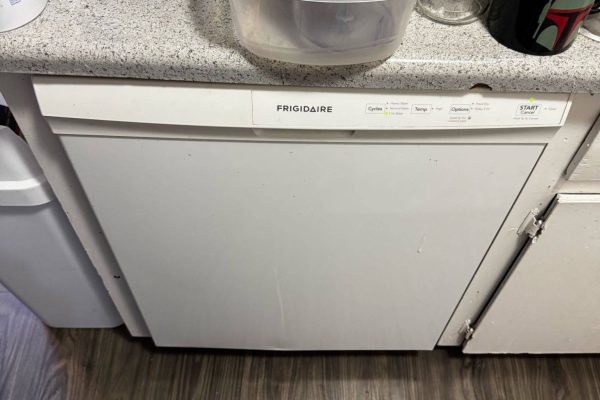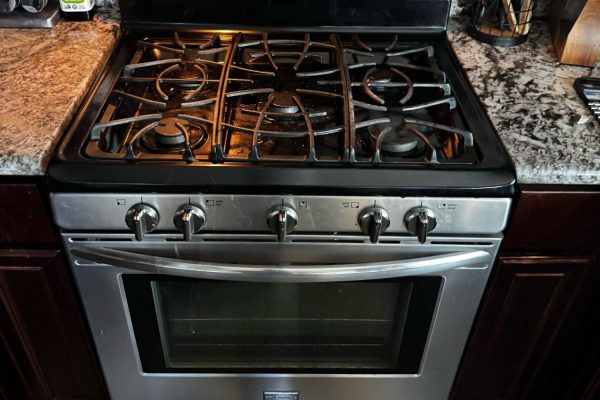An uneven cleaning performance from your dishwasher can be frustrating, leaving some dishes sparkling clean while others remain grimy and stained. Fortunately, with a bit of detective work and targeted troubleshooting, it’s possible to identify and fix the underlying causes of uneven dishwashing. In this comprehensive guide, we’ll explore common culprits behind uneven cleaning and provide practical solutions to ensure consistent results from your dishwasher.
Inspect Spray Arms: The spray arms are responsible for distributing water and detergent throughout the dishwasher during the wash cycle. If they become clogged or damaged, it can result in uneven cleaning. Remove the spray arms and check for any obstructions, such as food particles or mineral buildup. Clean the spray arms thoroughly with a soft brush or toothpick and ensure that they spin freely.
Check Water Inlet Valve: A malfunctioning water inlet valve can affect the water pressure and distribution within the dishwasher, leading to uneven cleaning. Inspect the water inlet valve for any signs of damage or obstruction and ensure that it is functioning correctly. Replace the valve if necessary to restore proper water flow to the dishwasher.
Verify Water Temperature: The temperature of the water used in the dishwasher can impact the effectiveness of the cleaning process. Ensure that the water entering the dishwasher is hot enough to dissolve detergent and loosen food particles. Run the kitchen sink’s hot water faucet for a few minutes before starting the dishwasher to ensure a consistent temperature throughout the wash cycle.
Use the Right Detergent: Using the wrong type or amount of detergent can result in poor cleaning performance and residue buildup. Choose a high-quality dishwasher detergent specifically formulated for automatic dishwashers and follow the manufacturer’s recommendations for dosage based on water hardness and soil level. Avoid overfilling the detergent dispenser, as excess detergent can leave behind a film on dishes.
Load Dishes Properly: Proper loading of dishes is essential for optimal cleaning performance. Arrange dishes in a way that maximizes water flow and ensures thorough coverage by the spray arms. Avoid overcrowding the dishwasher and blocking the spray arms with large or bulky items. Place heavily soiled dishes facing inward toward the center of the dishwasher for better cleaning.
Clean Filters and Drainage System: Clogged filters and drainage systems can impede water circulation and drainage, resulting in uneven cleaning and standing water at the bottom of the dishwasher. Remove the dishwasher’s filter and check for any debris or buildup. Clean the filter and drainage system thoroughly, ensuring that water can flow freely through the dishwasher during the wash and rinse cycles.
Adjust Wash Cycle Settings: Some dishwashers offer multiple wash cycle settings that vary in intensity and duration. Experiment with different wash cycle settings to determine which one provides the best cleaning results for your dishes. Consider using a longer wash cycle for heavily soiled dishes or selecting a pre-soak or extra rinse option for stubborn stains.
Maintain Proper Water Pressure: Inadequate water pressure can hinder the dishwasher’s cleaning performance, especially in homes with low water pressure or older plumbing systems. Ensure that the dishwasher’s water supply valve is fully open and that the water pressure meets the manufacturer’s recommendations. Consider installing a water pressure booster pump if necessary to improve water flow to the dishwasher.
Inspect and Clean Dishwasher Interior: Over time, food particles, grease, and soap scum can accumulate on the interior surfaces of the dishwasher, affecting cleaning performance. Periodically clean the interior of the dishwasher with a solution of vinegar and water or a dishwasher cleaner to remove buildup and eliminate odors. Pay special attention to areas where water tends to pool, such as the bottom of the dishwasher and around the door gasket.
Seek Professional Assistance:If troubleshooting efforts fail to resolve the issue or if the problem persists, it may be time to seek professional assistance. Contact a qualified appliance repair technician to diagnose and repair more complex or underlying issues with the dishwasher, such as motor or pump failure.
By following these comprehensive tips and techniques for identifying and fixing the causes of uneven dishwashing in your dishwasher, you can achieve consistent cleaning results and enjoy sparkling clean dishes with every cycle. Whether it’s checking spray arms, adjusting wash cycle settings, or maintaining proper water pressure, taking proactive steps to address the underlying causes of uneven cleaning will ensure that your dishwasher operates at its best for years to come.
We have appliance repair experts available today! Call a professional Poway Appliance Repair Service Center technician by phone or book your service.
Our service center is open 24/7, so you can easily schedule a convenient repair time. The specialist will arrive at the agreed time, carry out a diagnosis, and, if necessary, offer repairs. If you are willing, your appliance will be repaired directly on-site within 1-2 hours. We provide top-notch service at an affordable price!
Contact us
(858) 203-0990


